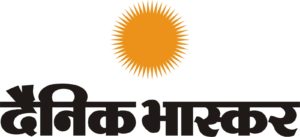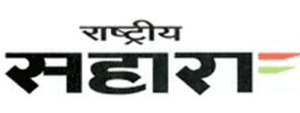
12-10-2016 (Important News Clippings)
To Download Click Here
Too small a pool
Certificates of appreciation from tax department feel nice but it must broaden the base
It feels good to feel wanted. Even by the income tax department. India’s tax department has been sending certificates of appreciation to tax payers, acknowledging their contribution to nation building. It may not make a meaningful difference in a country which scores poorly in ease of paying taxes but is noteworthy nevertheless. India’s direct tax payers form part of a narrow base which contributes more than 50% of the Centre’s total tax revenue. Certificates of appreciation, therefore, should be the beginning of an exercise to add to the pool of tax payers who join the ranks of nation builders.In 2012-13, tax department’s data showed that 28.9 million individuals filed tax returns, of whom only about 1.6 million people claimed income above Rs 1 million. When this number is juxtaposed with the 2.6 million cars sold the same year, it suggests that India’s income tax base is unnaturally narrow. Especially as other tax department data such as the Annual Information Returns over the last six years show that 9 million transaction details were collected of cash deposits of Rs 1 million or more in the formal financial system, or sale of immovable property of Rs 3 million or more.
If the army of nation builders has to grow, a two-pronged strategy is needed. A lot more transactions are now leaving behind an electronic trail which needs to be mined. India spends less than a rupee to collect Rs 100 of direct tax. Information technology is the best way of adding to tax collections without any significant extra expense. This must be complemented by closing myriad loopholes which result in India having a higher average headline tax rate than most Asian countries, but a low effective rate for smart tax assesses.
Automation Monster Coming for Our Jobs

Would advances in robotics, materials, artificial intelligence, ubiquitous high-speed networks, driverless vehicles and solar energy have completely transformed the economic landscape and rendered jobs scarce? Scary though the eventuality is, it cannot be dismissed outright. Planners lack the wisdom to divine the future and plan for it.
What can be done is to prepare India’s biggest strength, its human capital, to become creative and productive in unforeseen circumstances and to create the requisite social and physical infrastructure.Investment in social infrastructure — education, health, skills —must go hand in hand with investment in physical infrastructure. Past technological disruptions conclusively demonstrate that education is the key determinant and predictor of economic growth. Prioritising education requires an exponential increase in public spending on education but that alone is not enough.There is need for a radical change in the approach to learning, and the focus must be on outcomes.Critical thinking and challenging of received verities lay the ground for innovation. But a hierarchical society with highly skewed distribution of social power and wealth militate against a questioning attitude across society. Hyper-nationalism and majoritarianism have a similar effect.
Poverty, malnutrition and dysfunctional schools and public healthcare reinforce one another and the process of stunting minds and bodies. Stunted people are more likely to become victims of rapid social change than to ride it. The need is for inclusive and sustained growth.
दलहन और चीनी के दाम तय कर सकेगी सरकार

उपभोक्ता मामलों के मंत्रालय के एक वरिष्ठ अधिकारी ने बताया कि हमने पहले ही वैध माप पद्धति (पैकेट बंद जिंस) नियमों, 2011 में संशोधनों को अधिसूचित कर दिया है। इसमें आवश्यक जिंस का खुदरा मूल्य तय करने का प्रावधान शामिल किया गया है। यह नियम उन आवश्यक जिंसों पर लागू होगा जिन्हें खुला तथा पैकेट बंद दोनों में खुदरा बाजारों में बेचा जाता है। यह पूछे जाने पर कि क्या सरकार आवश्यक जिंसों का खुदरा दाम दैनिक आधार पर तय करेगी, अधिकारी ने कहा कि ऐसा नहीं है। यह सिर्फ असामान्य परिस्थितियों में होगा, जबकि खुदरा कीमतों में सामान्य बढ़ोतरी दिखाई देगी। फिलहाल अभी तक थोक कारोबारियों तथा आयातकों पर नियंत्रण के उपाय थे, रिटेलरों पर नहीं। इस प्रावधान से सरकार को उपभोक्ताओं के हितों में अग्रसारी कदम उठाने में मदद मिलेगी।
दालों के दाम नियंत्रित करने की कोशिश, अभीकेंद्र सरकार दालों की कीमतों को नियंत्रित करने की कोशिश कर रही है, जो जून 2016 के दौरान खुदरा बाजार में 200 रु. किलो तक पहुंच गई थी। इसकी वजह सूखा पड़ने की वजह से देश में दलहन का उत्पादन कम होना है। दालों की कीमतों में अप्रत्याशित तेजी की वजह से एनडीए सरकार को कई कदम उठाने को मजबूर होना पड़ा है। इन कदमों में दलहन का आयात और न्यूनतम समर्थन मूल्य में बढ़ोतरी करना शामिल है। ताकि घरेलू बाजार में सप्लाई बढ़ाकर दालों की कीमतों को नियंत्रित किया जा सके। महंगेप्याज का राजनीतिक असर : काबिलेगौरहै कि प्याज की कीमतों में तेजी की वजह से सरकारों के भविष्य पर असर पड़ता है। वर्ष 1998 में प्याज महंगा होने से दिल्ली में बीजेपी सरकार को चुनाव में हार मिली थी और कांग्रेस सत्ता में गई थी।
Date: 12-10-16
अनुकूलताओं के बीच संघ की बढ़ती जिम्मेदारियां
सांस्कृतिक संगठनराष्ट्रीय स्वयं सेवक संघ के नब्बे साल पूरे होने पर इस दशहरे पर नए गणवेश में सर संघचालक मोहन भागवत ने पाकिस्तान को कड़ा संदेश देने के साथ राष्ट्रीय राजनीति के लिए भी कई शिक्षाएं देते हुए यह बता दिया है कि वह एक राजनीतिक संगठन है, जो देश से विदेश तक की हर प्रकार की राजनीति में दखल देना चाहता है। मोहन भागवत ने सर्जिकल ऑपरेशन के लिए सेना और नागरिक नेतृत्व को बधाई देते हुए राजनीतिक दलों को बयान देते समय अपनी सीमाओं में रहने की नसीहत भी दी है और गोरक्षकों के बचाव में खड़े होते हुए असली और नकली गोरक्षकों में फर्क करने की सलाह भी। वास्तव में संघ प्रमुख ने सांस्कृतिक राष्ट्रवाद की विचारधारा को नए संदर्भों में रखने की कोशिश की है और उसी को लखनऊ में शाम को प्रधानमंत्री नरेंद्र मोदी ने और विस्तार दिया। अगर मोदी कहते हैं कि यह दशहरा विशेष है तो उसका गंभीर अर्थ संघ के नब्बे साल पूरे होने से है और सतही अर्थ सर्जिकल ऑपरेशन जैसी कार्रवाइयां करने से। इसे एक सैन्य अभियान से ज्यादा राजनीतिक अभियान बनाया जा रहा है तो उसका साफ अर्थ है कि इसके माध्यम से संघ की उस विचारधारा में लोगों का भरोसा बढ़ रहा है, जिसके लिए उसे नब्बे साल की उपेक्षा झेलनी पड़ी है। कांग्रेस के पतन, कम्युनिस्ट पार्टियों के अप्रासंगिक होने और समाजवादी आंदोलन के विखंडित होने के बाद देश के राजनीतिक विमर्श के केंद्र में संघ परिवार गया है। हिंदुत्व की विचारधारा ने बहुत तेजी से उदार और जनोन्मुखी राष्ट्रवाद की जगह कॉर्पोरेट और सैन्य केंद्रित राष्ट्रवाद को स्थापित किया है। हालांकि, भारतीय सेना प्रोफेशनल आर्मी रही है, लेकिन इस बीच मीडिया और राजनीति ने उसे विमर्शों के केंद्र में रखकर उसका राजनीतिकरण किया है। आज अगर इस तरह की धारणा फैलाई जा रही है कि एक खास पार्टी सेना को अतिरिक्त प्यार देती है, तो वह लोकतंत्र के लिए अच्छी बात नहीं है। संघ को इन सीमाओं को भी समझना होगा। भागवत ने इंसाफ पर जोर देते हुए स्वयंसेवकों से उसे दिलाने की अपील भी की है, लेकिन समाज का आर्थिक और सामाजिक रूप से उपेक्षित दलित और अल्पसंख्यक तबका आज भी चौतरफा निशाने पर रहता है। ऐसे में संघ परिवार का यह दायित्व बनता है कि वह अपने गणवेश को हाफ से फुल करने के साथ सामाजिक पूर्वग्रहों में भी बदलाव लाए।
आदेशों की अवमानना से परेशान न्यायपालिका
न्यायपालिका राज्य का वह अंग है जिसके पास अपने आदेशों के अनुपालन के लिए कोई एजेंसी नहीं होती है। उसे अपने आदेशों को लागू कराने के लिए कार्यपालिका या विधायिका की मदद लेनी पड़ती है। लेकिन अगर राज्य के ये तीनों अंग आपस में ही भिड़े हों तो संवैधानिक स्थिति बेढंगी बन सकती है। जब सरकार के इन तीनों अंगों के बीच सौजन्य और सामंजस्य होता है तो आम तौर पर संकट के गंभीर रूप अख्तियार करने के पहले ही उनका समाधान निकाल लिया जाता है। उच्चतम न्यायालय के आदेशों की खुलेआम आलोचना करने वाले दो मुख्यमंत्रियों ने बाद में उससे माफी भी मांगी। कर्नाटक के तत्कालीन मुख्यमंत्री एस एम कृष्णा ने वर्ष 2008 में कावेरी नदी जल विवाद पर उच्चतम न्यायालय के आदेश का उल्लंघन किया था जबकि उत्तर प्रदेश के मुख्यमंत्री कल्याण सिंह ने वर्ष 1994 में अयोध्या के विवादित ढांचा प्रकरण में आदेशों की अवहेलना की थी। न्यायपालिका के सामने एक बार फिर ऐसे हालात पैदा हुए हैं जब उसके आदेश का पालन नहीं किया जा रहा है। कावेरी पर पैदा हुए नए संकट के अलावा भारतीय क्रिकेट कंट्रोल बोर्ड (बीसीसीआई) में पारदर्शिता लाने के लिए गठित लोढ़ा समिति की सिफारिशों को लागू करने में भी कोताही बरती जा रही है।
Date: 12-10-16
ब्रिक्स को नई राह की तलाश
गोवा में होने वाले ब्रिक्स देशों के आठवें शिखर सम्मेलन के ऐन पहले चीन ने सदस्य देशों के बीच मुक्त व्यापार क्षेत्र बनाने का विचार रखा है। उसका कहना है कि इस समूह में मुक्त व्यापार होने से आपसी सहयोग का विस्तृत दायरा विकसित होगा। इससे भारत, चीन, रूस, ब्राजील और दक्षिण अफ्रीका के बीच तटकर और गैर-तटकर अवरोधों को दूर करने में मदद मिलेगी और आपसी कारोबार बढ़ेगा। सदस्य देशों में निवेश को प्रोत्साहन मिलेगा जिससे दुनिया की सुस्त आर्थिक रफ्तार के उलट ये देश तेजी से विकास कर सकेंगे। यह एक महत्त्वाकांक्षी विचार है लेकिन अतीत के अनुभवों से सबक लें तो ब्रिक्स के पिछले सम्मेलनों से शायद ही कभी ठोस नतीजे सामने आए हैं। यह सच है कि ब्रिक्स के नवीन विकास बैंक (एनडीबी) की स्थापना की दिशा में कुछ प्रगति हुई है लेकिन इसे लंबा सफर तय करना है। दरअसल चीन की नजर में एनडीबी से कहीं अहम एशियाई ढांचागत निवेश बैंक है। कड़वी सच्चाई यही है कि आज के दौर में ब्रिक्स समूह केवल बातचीत का एक मंच भर बनकर रह गया है जिसमें शामिल होने वाले नेता अपनी छवि निर्माण के लिए इसका इस्तेमाल करते हैं।
एकतरफा व्यापार की समस्या
भारत का चीन के साथ व्यापार एकतरफा हो चला है। हम जितना माल चीन को निर्यात कर रहे हैं उससे लगभग दस गुना वहां से आयात कर रहे हैं। चीनी माल ने चौतरफा तांडव मचा रखा है। पतंग का मांझा, गणेशजी की प्रतिमा, एलईडी बल्ब आदि के बाजार में चीन का बोलबाला है। भारत तथा चीन के बीच सहमति बनी है कि इस एकतरफा व्यापार को संतुलित करने के प्रयास किए जाएंगे, पर हमारा व्यापार घाटा काबू में नहीं आ रहा है। यह काबू में आ भी नहीं सकता, क्योंकि यह दोनों देशों के मूल आर्थिक मॉडल के अंतर से उत्पन्न हो रहा है।
आर्थिक मॉडल के इस अंतर को किसी किसान के उदाहरण से समझें। एक किसान को नहर से पूरा पानी नहीं मिलता है, क्योंकि नहर का रखरखाव घटिया है और पानी का रिसाव हो रहा है। उसे बिजली नहीं मिलती है, क्योंकि बिजली बोर्ड के कर्मचारियों द्वारा बिजली की बड़े पैमाने पर चोरी की जा रही है। स्पष्ट है कि किसान की उत्पादन लागत ज्यादा और उत्पादन कम है। वह माल को बाजार में बेच नहीं पा रहा है। उसका कारोबार घाटे में चल रहा है, परंतु उसका खेत किसी शहर के नजदीक स्थित है। किसी उद्यमी को उद्योग लगाने के लिए जमीन की जरूरत थी। किसान ने अपनी जमीन का एक हिस्सा एक उद्यमी को बेच दिया। उससे मिले पैसे से फ्लैट स्क्रीन टीवी और महंगी गाड़ी खरीद ली। उसकी खेती घाटे में होने के बावजूद वह ऐशो आराम की जिंदगी व्यतीत कर रहा है। लगभग ऐसी ही स्थिति भारतीय अर्थव्यवस्था की है। हमारी नहर, बिजली और बुनियादी व्यवस्थाएं खस्ताहाल हैं। हमारे माल की उत्पादन लागत ज्यादा आ रही है। हमारे निर्यात दबाव में हैं, परंतु विदेशी निवेशक भारत में निवेश करना चाहते हैं। उन्हें हम अपनी जमीन बेच रहे हैं। विदेशी निवेश से मिलने वाली रकम से हम चीन से गणेशजी की मूर्तियों का आयात कर रहे हैं। जिस प्रकार किसान का कारोबार घाटे में चलने के बाद भी वह कार में ठाठ से घूम रहा है, उसी प्रकार हमारे निर्यात दबाव में रहने के बावजूद हम चीन से गणेशजी की मूर्ति का आयात करके आनंद मना रहे हैं। चीन का मॉडल इससे भिन्न है। चीन के किसान को पानी, बिजली और सड़क उपलब्ध है। उसकी उत्पादन लागत कम आती है। वह चावल और सब्जी को बाजार में बेचकर धन कमा रहा है। कमाई गई रकम से वह शहर में जमीन खरीद रहा है। इससे चीन का मॉडल स्पष्ट होता है। चीन में उत्पादन लागत कम आती है, क्योंकि बुनियादी ढांचा मजबूत है। चीन के निर्यात अधिक और आयात कम हैं। निर्यात से होने वाली आमदनी की वह देश बचत कर रहा है। हमारी बचत दर 28 प्रतिशत की तुलना में चीन की बचत दर लगभग 45 प्रतिशत है। अपनी बचत से वह देश पूरी दुनिया में प्रापर्टी खरीद रहा है। चीन को जितनी रकम विदेशी निवेश से मिलती है उससे अधिक विदेशी निवेश वह अमेरिका, यूरोप और अन्य देशों में कर रहा है। भारत और चीन के आर्थिक विकास के मॉडल में स्पष्ट भिन्नताएं हैं। इन भिन्नताओं को हमें समझना होगा। भारत की बुनियादी व्यवस्था भ्रष्ट और लचर है, जबकि चीन की दुरुस्त है। भारत की अर्थव्यवस्था घाटे में चल रही है। भारत द्वारा विदेशी निवेश से मिली पूंजी का उपयोग चीन के सस्ते माल के आयात को किया जा रहा है, जबकि चीन द्वारा दूसरे देशों में विदेशी निवेश करके दुनिया को खरीदा जा रहा है। भारत और चीन के बीच व्यापार का असंतुलन इस मूल भिन्नता के कारण है। हम घाटे के बावजूद अपनी जमीन को बेचकर कार का आनंद उठा रहे हैं, जबकि चीन बचत करके दुनिया को खरीद रहा है।
इस विसंगति को छुटपुट कदमों से दूर नहीं किया जा सकता है। विश्व व्यापार संगठन के नियमों में व्यवस्था है कि किसी देश द्वारा नीचे दाम पर माल बेचने पर खरीददार देश द्वारा उस माल पर एंटी-डंपिंग ड्यूटी आरोपित की जा सकती है। बीते दिनों में भारत द्वारा 344 एंटी डंपिंग ड्यूटी लगाई गई है। इनमें से 177 एंटी डंपिंग ड्यूटी चीन से आयात किए जा रहे माल पर लगाई गई है, परंतु इससे चीनी माल का तांडव नहीं रुका है। तात्पर्य यह कि चीनी माल को दोष देने के स्थान पर उस देश से सीख लेनी चाहिए। अपनी बुनियादी संरचना में व्याप्त अकुशलता एवं भ्रष्टाचार पर नियंत्रण कर अपनी उत्पादन लागत कम करनी चाहिए। ऐसा करने से भारत में बनी गणेशजी की मूर्ति सस्ती पड़ेगी और भारतीय उपभोक्ता चीन में बनी मूर्ति नहीं खरीदेगा। दूसरे, हमें अपनी खपत कम करते हुए अपनी आय का उपयोग दूसरे देशों को खरीदने में करना चाहिए। लाल बहादुर शास्त्री ने किसी समय नारा दिया था कि देश का हर नागरिक सप्ताह में एक दिन उपवास रखे जिससे देश की खाद्यान्न समस्या का आंशिक हल निकले। इसी प्रकार हमें प्रयास करना चाहिए कि देश का हर नागरिक चीन से आयातित माल की खपत कम करे और बची रकम का एक फंड में निवेश करे, जिससे अमेरिका में संपत्ति खरीदी जा सकें। हमारे निर्यात घाटे की समस्या आंतरिक है। प्रमाण है कि मई 2016 के पूर्व के 18 माह में दक्षिण अमेरिका, रूस तथा अफ्रीका को होने वाले हमारे निर्यातों में लगभग एक तिहाई की गिरावट आई है। यदि समस्या चीन की थी तो इन देशों के निर्यातों में गिरावट नहीं आनी चाहिए थी। अत: हमें अपने चिंतन को दुरुस्त करना चाहिए। ‘मेक इन इंडिया’ की छत्रछाया में विदेशी निवेश से मिली रकम का उपयोग आयातों के लिए करने के स्थान पर इसका उपयोग दुनिया में संपत्तियों को खरीदने के लिए करना चाहिए। जाहिर है कि अपनी खराब नीतियों का ठीकरा चीन पर फोड़ने से हमारी समस्या का समाधान नहीं होने वाला।
इस नकारात्मक छवि के साथ-साथ भारत का एक सकारात्मक पक्ष भी है। यह सही है कि हम उत्पादित माल का जितना निर्यात करते हैं उससे जसदा आयात करते हैं। उत्पादित माल में गेहूं, चीनी, कपड़ा, कार जैसे माल आते हैं जो भौतिक पदार्थ होते हैं। हमारे विदेशी व्यापार का दूसरा हिस्सा सेवाओं का है, जैसे साफ्टवेयर, काल सेंटर, ट्रांसलेशन, सिनेमा इत्यादि। सेवाओं में हमारे निर्यात अधिक तथा आयात कम हैं। निर्यात से मिली रकम का उपयोग हम माल के आयात के लिए कर रहे हैं। यह सही भी है, परंतु विदेशी निवेश से मिली रकम का उपयोग आयात के लिए करना जमीन को बेचकर स्कार्पियो में घूमने जैसा है। हमें अपनी अर्थव्यवस्था को दुरुस्त करके अपनी उत्पादन लागत कम करनी होगी जिससे माल का आयात कम हो जाए। इसके बाद सेवाओं के निर्यात तथा विदेशी निवेश से मिली रकम का उपयोग दुनिया को खरीदने के लिए करना चाहिए, न कि पतंग का मांझा और गणेशजी की मूर्ति का आयात करने के लिए।
[ लेखक डॉ. भरत झुनझुनवाला, आर्थिक मामलों के विशेषज्ञ हैं और आइआइएम बेंगलुरू में प्रोफेसर रह चुके हैं ]
Shortcut to scholarship
Encouraging students to photocopy course material instead of reading real books only perpetuates India’s poverty of ideas.
It needs considerable myopia to celebrate the recent verdict of the Delhi High Court upholding the legal validity of photocopying as a means to promote knowledge and learning. The case had originated from a practice involving the use of “course packs” containing hundreds of photocopied pages from books. The argument that books are much too expensive for students to buy proved strong enough to prevail against the plea made by some prominent publishers that bulk photocopying infringes copyright. There was an obvious David and Goliath feel to the case. David has won, but the victory conceals a dark hole. Even as the photocopying shop at Delhi University’s Library of Social Sciences resumes preparing its fat course packs, we must take some time off to peep into the dark hole.
If we do, we will encounter the reality of higher education in India and institutions like Delhi University, especially their libraries. It is no news that the university has been facing an acute financial crisis for several years. All central universities are affected by the slashing of funds suffered by the University Grants Commission (UGC). All aspects of university life are suffering, and some of the pain has now become a routine reality. The use of ad hoc teachers instead of tenured faculty is one aspect of the new reality. The decline of library services is another. Retiring staff has not been replaced for years. A paucity of funds has forced libraries to cut down on new book purchases and subscriptions to journals, especially those published overseas. The use of “course packs” is a reflection of this larger context.
Libraries in India are victims of a compounded misunderstanding. Many new age academic administrators believe that libraries need not be a priority anymore because the internet now provides plentiful access to knowledge. This is a typical Third World delusion that has taken many forms over the years. Each time a new technology comes in, our administrators get excited. They love to entertain the fantasy wherein India overtakes Western nations by taking a short cut in the fourth gear. Online access to knowledge is the current version of this fantasy. Vice-chancellors who regard Google as a global guru have willingly endorsed the government’s policy of hard kicking library infrastructure and permanent faculty. As a result, libraries can no longer buy major new titles or multiple copies of older, basic texts. The newly imposed semester system demands multiple copies of essential books because courses have to be completed within 16 weeks. Malnourished libraries can’t cope with the new teaching cycle; hence, the lure of photocopied packs.
The idea that photocopied material can substitute books needs to be examined on several scores. A student who has studied from photocopied “course packs” cannot enjoy revisiting a text later in student life or beyond. This is because the ink used by laser printers starts fading within a year or two. “Course packs” promote the values associated with an exam-centric culture of education. Far from creating a fascination for knowledge, such a culture reinforces an obsession with exams. “Course packs” contain the readings relevant for the exam. It matters little if the old pack fades because the student must rummage through the next when the new semester starts.
The acceptance of photocopying as a legitimate substitution for library holdings will perpetuate India’s academic poverty. The publishers who had protested against the photocopying shop located in the Ratan Tata Library are no enemies of higher education. They have published some of our best-known academic authors, providing them a global reach and reputation. No publisher of serious books anywhere in the world is currently having an easy time. Indeed, publishing as an industry is among the worst hit by global recession and budget cuts in education. If the measly profits on which academic publishing in India survives are to be nibbled away by photopying, the losses will have to be shared by all, including authors, teachers and students.
Students now come from a broader social spectrum than in the past. Many come from homes where no one had earlier gone to college. They deserve a well-stocked library to overcome the backlog of good schooling. Giving them a fading pile of A-4 sheets, instead of nicely bound books, compounds the injustice they have suffered throughout childhood. Among the rest of the student body today, many attended high fee-charging English-medium private schools. They have resources and impressive private possessions. It is the responsibility of an academic institution to induct them into a culture of owning, and not just reading, books. Good libraries do just that, by providing a physical ethos where books look beautiful. “Course packs” don’t.
By saving money on libraries and teachers, India can only sink deeper in the poverty of ideas and research. The rhetoric of quality education has already worn thin, and anyone can spot the brittle bones of our once-reputed institutions. No Indian university comes close to the world’s best. The three key criteria that push our institutions down in global rankings are: Teachers, libraries and significant research. All three are interrelated. Good teachers need assured careers with eager students and a rich library.The greatest irony of the copyright dispute was the support that eminent scholars, including Amartya Sen, gave to the photocopy shop. Sen’s support saddened me because he belongs to the generation of teachers who believed that India’s nation-building would have to be original. It seems he too has reconciled to the prevailing view that the best option now left for India — and for Delhi’s old, struggling university — is to focus on photocopying.
Date: 11-10-16
Next Door Nepal
When judiciary turns activist

The activist role of the supreme court — although it did not come in the form of a verdict — has been perceived as detrimental to the morale and reputation of the police.
An activist judiciary may make its pronouncements clearer and be far less ambiguous in its approach, but it may also generate a stronger, equally loud and opposite reaction. This is the situation the supreme court of Nepal is facing in the wake of the appointment of a dozen new judges, some of them civil society activists who had earlier worked closely with external donors.
A programme organised by the supreme court last week with funding from Roller, a UNDP project, on the theme, violence against women and access to justice, has now triggered a war within the institution. Justice Baidhyanath Upadhyay, the senior-most judge, said, “I wish this programme had never taken place in the manner it happened.” He added that “the practice of full-court approving such events was ignored this time around”. The implied message was Chief Justice Sushila Karki did not consult the judges she thought may not concur with the idea of collaborating with a UNDP project.It is not only the fellow judges who are miffed at what the CJ did. Police chief Upendra Kant Aryal left the programme midway apparently in protest even though the president, prime minister, the speaker of the House and the chief justice were present in the audience, after a play enacted at the event showed the police as a collaborator in cases of “sexual exploitation” of women. “There is reason to believe that the hosts including the CJ and Roller had approved the play before hand, its theme and content. Indicting a state institution was in very bad taste,” a sitting judge says.
The judge who spoke briefly about the programme was Sapana Pradhan Malla, a noted civil society activist who was previously a politician and MP. Malla had also been in the panel of the Geneva-based Committee Against Torture (CAT). The supreme court has not yet formally responded to queries on whether she has resigned from that position.The apex court-UNDP collaboration has exposed the growing differences between the conventional judges and the activist ones. The dissonance has also come at a time when certain wings of the UN and some of the external donors face accusations of promoting and funding secessionists and ethnic militancy in the country. Such support is reflected in the comments made by their employees in social media, a liberty that they do not enjoy elsewhere.
The fear in a section of society is whether the supreme court will be guided more by activism and issues that the donors support, or will it be guided by the constitutional parameters, provisions and conventions. Activism often challenges the existing laws and practices in the state and society. The activist role of the supreme court — although it did not come in the form of a verdict — has been perceived as detrimental to the morale and reputation of the police.
However, there are people — in the media as well in civil society groups — who support the activist line of the apex court. Centre for Investigating Journalists, an NGO that hosted an international workshop for investigating journalists across the globe recently, brought out a paper that said Chief Justice Karki was the only hope for preservation and protection of human rights and democratic values as well as against rampant corruption in high places. Recently, the court decided to review two of its old verdicts. The first one is related to the eligibility of the chief of Commission of Inquiry Into Abuse of Authority, an anti-graft constitutional body, to hold the post following a PIL appeal. The issue in the second case is whether the state should confiscate the bungalow and land that the former king, Gyanendra Shah, gave to his daughter as a wedding gift. In the first case, a section of the media and civil society are opposed to Lokman Singh Karki’s appointment to the post, while in the second case, the current political establishment favours that the property be confiscated and handed over to a trust. The SC decision to review its own ruling, many believe, confirms with the tendency to be activist. Though entertaining appeals against some old verdicts is not unusual, doing so selectively may complicate matters, especially because the judges are clearly divided and at loggerheads.
Recently, the court decided to review two of its old verdicts. The first one is related to the eligibility of the chief of Commission of Inquiry Into Abuse of Authority, an anti-graft constitutional body, to hold the post following a PIL appeal. The issue in the second case is whether the state should confiscate the bungalow and land that the former king, Gyanendra Shah, gave to his daughter as a wedding gift. In the first case, a section of the media and civil society are opposed to Lokman Singh Karki’s appointment to the post, while in the second case, the current political establishment favours that the property be confiscated and handed over to a trust. The SC decision to review its own ruling, many believe, confirms with the tendency to be activist. Though entertaining appeals against some old verdicts is not unusual, doing so selectively may complicate matters, especially because the judges are clearly divided and at loggerheads. The bar is divided and frightened. “Some times I think I should stop practicing since I can only argue on the basis of constitutional provisions, laws and precedents set world-wide,” said a prominent constitutional lawyer. “I cannot go by the fluctuating mood and interests of the judges in the bench,” he added.
The bar is divided and frightened. “Some times I think I should stop practicing since I can only argue on the basis of constitutional provisions, laws and precedents set world-wide,” said a prominent constitutional lawyer. “I cannot go by the fluctuating mood and interests of the judges in the bench,” he added.Besides, the supreme court judges may attract public criticism for their activist role, given past political and NGO affiliation as well as association with the donors. This could erode public faith in the judiciary.
सही फैसला
सवरेच्च न्यायालय द्वारा महिला सुरक्षा कानून में किया गया एक छोटा परिवर्तन बड़े परिणामों का आधार बन सकता है। वस्तुत: न्यायालय ने महिला सुरक्षा कानून 2005 की धारा 2(क्यू) से ‘‘वयस्क पुरु ष’ शब्द हटा दिया है। वयस्क पुरु ष शब्द के रहते इस कानून के अंतर्गत महिलाओं के खिलाफ घरेलू हिंसा के मामले में उसी पर मुकदमा चल सकता था, जो वयस्क पुरु ष हो। अब ऐसा नहीं होगा। इस शब्द के हटाने के बाद वह पुरु ष हो या महिला, वयस्क हो या अवयस्क सब पर अपराध के मुताबिक मुकदमा चलाया जा सकेगा। दरअसल, बंबई हाईकोर्ट ने घरेलू हिंसा के एक मामले में दो लड़कियों, एक महिला एवं एक नाबालिग लड़के को यह कहते हुए आरोपमुक्त कर दिया था कि वे पुरु ष वयस्क नहीं हैं। इसलिए उन पर घरेलू हिंसा कानून के अंतर्गत मुकदमा नहीं चलाया जा सकता। इसमें उच्च न्यायालय का कोई दोष नहीं था। महिला सुरक्षा कानून 2005 की धारा 2 (क्यू) कहती है कि प्रतिवादी का मतलब ऐसा कोई भी वयस्क पुरु ष है जो पीड़ित व्यक्ति के घरेलू संबंध में रहा है और जिसके खिलाफ पीड़ित व्यक्ति ने घरेलू हिंसा के तहत राहत मांगी है। तो दो शब्दों के युग्म से न जाने कितने लोग कहां-कहां मुकदमों से बचे होंगे, कितने आरोपमुक्त हुए होंगे और पीड़ित महिला कानून के आइने में मुंह ताकती रह गई होगी। इस पृष्ठभूमि में देखें तो सर्वोच्च न्यायालय का यह फैसला ऐतिहासिक है। बताने की आवश्यकता नहीं कि इससे कानून की परिधि विस्तारित हो गई है। गहराई से देखा जाए तो वयस्क पुरु ष शब्द के रहने से इस कानून के उद्देश्य को ही धक्का पहुंचता था। कानून का मकसद ससुराल में होने वाले उत्पीड़न से किसी महिला को न्याय देना या उससे बचाना है। यह विचित्र है कि अगर प्रताड़ित करने वाली कोई महिला हुई तो उसका वह कृत्य अपराध की श्रेणी में नहीं आ सकता। इसी तरह प्रताड़ना चाहे जितना क्रूर है, उसे करने वाला यदि अवयस्क है तो भी वह अपराधी नहीं हो सकता। वयस्क पुरु ष शब्द जोड़ते समय चाहे जिन कारणों व परिस्थितियों का विचार किया गया हो, इसे कानून के उद्देश्य के मद्देनजर तार्किक नहीं कहा जा सकता। न्यायालय ने ठीक ही कहा है कि यह संविधान के तहत समानता के अधिकार का उल्लंघन करता है। इससे अपराध करने वाले व्यक्ति-व्यक्ति के बीच भेदभाव पैदा होता है। अगर कोई नाबालिग है तो उस पर मुकदमा नाबालिगों के कानून के अंदर अलग न्यायालय में तो चल सकता है, लेकिन मुकदमा चले ही न, यह तो न्याय नहीं हुआ।





